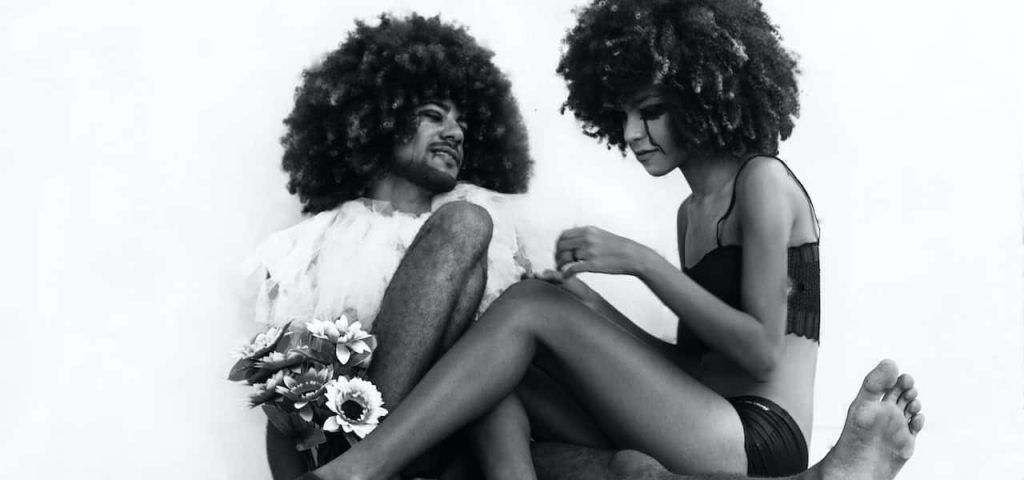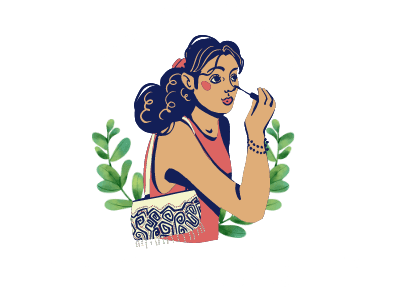Here is your complete guide to Curly Hair Protective Hairstyles.
Introduction to Curly Hair Protective Hairstyles
What are the Curly Hair Protective Hairstyles? Curly hair is unique and beautiful, but it also requires special care to keep it healthy and vibrant. One effective way to care for curly hair is by using protective hairstyles. In this ultimate guide, we will explore the world of curly hair protective hairstyles, including their benefits, how to properly install and maintain them, styling tips, and frequently asked questions. Whether you’re a seasoned naturalista or new to the curly hair journey, this comprehensive guide will provide you with valuable insights and inspiration to embrace and protect your curly locks with style and health. Here is your complete guide to Curly Hair Protective Hairstyles.
Understanding Curly Hair
Before diving into protective hairstyles, it’s important to understand the characteristics of curly hair. Curly hair comes in various types, including wavy, curly, and coily, and is characterized by its unique texture and porosity. Curly hair is often prone to dryness, frizz, tangling, and breakage due to its structure. Environmental factors such as heat, humidity, and pollution can also affect curly hair negatively. However, with proper care, curly hair can thrive and look stunning.
Benefits of Curly Hair Protective Hairstyles
Protective hairstyles are hairstyles that keep the ends of the hair tucked away, reducing manipulation and friction, and protecting the hair from environmental factors. Here are some of the benefits of protective hairstyles for curly hair:
Minimizes manipulation and reduces hair breakage
Constant manipulation, such as combing, brushing, and styling, can cause hair breakage, especially for curly hair. Protective hairstyles help minimize manipulation by keeping the hair in a low-manipulation style, reducing the risk of breakage and promoting hair health.
Protects against environmental factors
Curly hair is often sensitive to environmental factors such as heat, humidity, and pollution, which can lead to frizz, dryness, and damage. Protective hairstyles provide a barrier against these external factors, helping to maintain moisture and protect the hair from environmental damage.
Retains moisture and promotes hair health
Curly hair tends to be dry due to its structure, and retaining moisture is crucial for maintaining healthy curls. Protective hairstyles help lock in moisture by reducing moisture loss through the ends of the hair, keeping the curls hydrated and promoting overall hair health.
Reduces tangling and knotting
Curly hair is prone to tangling and knotting, which can lead to breakage and damage. Protective hairstyles help minimize tangling and knotting by keeping the hair in a low-manipulation style, reducing the risk of tangles and knots forming.
Promotes length retention
Length retention is a common goal for many curly-haired individuals. Protective hairstyles can help promote length retention by minimizing breakage, tangling, and other forms of damage, allowing the hair to grow longer and healthier.
Popular Curly Hair Protective Hairstyles
There are various protective hairstyles that are popular among curly-haired individuals. Here are some of the most commonly used protective hairstyles for curly hair:
Box Braids
The box braids are a classic protective hairstyle that involves sectioning the hair into small square or rectangular sections and braiding them from the roots to the ends. Box braids are versatile and can be styled in different ways, such as updos, buns, or left down.

Twists: Curly Hair Protective Hairstyles
The twists are another popular protective hairstyle for curly hair that involves twisting small sections of hair, typically in a two-strand or flat twist pattern. Twists can be worn as is, or styled into updos, buns, or other creative styles.
Bantu Knots: Curly Hair Protective Hairstyles
The bantu knots are a stylish protective hairstyle that involves twisting small sections of hair into knots close to the scalp. Bantu knots can be worn as a standalone style or unraveled for a beautiful twist-out or curl pattern.
Cornrows
The cornrows are a traditional protective hairstyle that involves braiding the hair close to the scalp in straight or curved lines. Cornrows can be worn as is or styled into different patterns, and they are a great option for those who prefer a more low-maintenance protective style.

The Crochet Braids
Crochet braids are a popular protective hairstyle that involves attaching extensions to the hair using a crochet hook. Crochet braids come in various styles, such as curls, twists, or braids, and offer versatility and creativity in styling options.
Wigs and Weaves
The wigs and weaves are versatile protective hairstyles that involve wearing a wig or hair extensions to protect the natural hair underneath. Wigs and weaves come in different styles, lengths, and textures, allowing for endless styling possibilities.
How To Plop Curly Hair?
Plopping is a popular method for drying curly hair without disrupting the natural curl pattern. To plop curly hair, follow these steps:
- Start with freshly washed and conditioned hair. Apply your favorite leave-in conditioner or curl-enhancing product to damp hair.
- Lay a clean, microfiber towel or a cotton t-shirt on a flat surface. Flip your hair forward and gently lower your curls onto the towel or t-shirt, with your curls nestled in the center.
- Use the sides of the towel or t-shirt to gather the ends of the fabric together, forming a loose bun on top of your head.
- Secure the ends of the towel or t-shirt with a hair tie or clip, leaving the curls bundled up in the fabric for about 20-30 minutes.
- After the plopping time is up, carefully release your hair from the towel or t-shirt. Style your curls as desired, avoiding excessive touching or manipulation to maintain the natural curl pattern.

What’s The Difference Between Hair Plopping And Using A Twisted Towel?
Both hair plopping and using a twisted towel are methods for drying curly hair without causing frizz or disrupting the natural curl pattern. However, there are some differences between the two methods:
- Plopping: Plopping involves using a clean, microfiber towel or cotton t-shirt to bundle the curls on top of the head, creating a loose bun. The fabric is secured with a hair tie or clip, and the curls are left to dry for a short period of time, typically 20-30 minutes.
- Twisted Towel: Using a twisted towel involves using a regular bath towel, twisting it around the hair, and securing it with a hair tie or clip to create a turban-like shape. The towel is left on the hair for a longer period of time, usually overnight or for several hours, to allow the towel to absorb excess moisture from the hair.
The main difference between the two methods is the duration of time the curls are left bundled in the fabric. Plopping is a quicker method that allows for a faster drying time, while using a twisted towel is a longer-term method that can be done overnight or for extended periods of time.
Curly Hair Protective Hairstyles: How To Sleep With Curly Hair
Sleeping with curly hair can be a challenge, as tossing and turning during the night can cause friction, resulting in frizz and breakage. Here are some tips for sleeping with curly hair and maintaining your protective hairstyle:
Pineapple Method
Gather your curls on top of your head and secure them with a soft, fabric-covered hair tie, creating a loose pineapple-like shape. This helps to protect the curls from being flattened or crushed while you sleep.
Satin Pillowcase or Bonnet: Curly Hair Protective Hairstyles
Swap your cotton pillowcase for a satin or silk pillowcase, or use a satin/silk bonnet or scarf to cover your hair while you sleep. Satin/silk materials reduce friction, helping to minimize frizz and breakage.
Loose Updo or Braids
If you prefer to keep your curls contained, you can try loosely braiding your hair or creating a loose updo before bedtime. Avoid tight hairstyles that can cause tension on the hair, leading to breakage.
Refresh With Water or Refreshing Spray
In the morning, you can refresh your curls by misting them with water or a refreshing spray and gently scrunching them to revive their shape.
Remember to use gentle hair care practices and avoid excessive manipulation or friction while you sleep to maintain the integrity of your protective hairstyle and keep your curly hair healthy and protected.
How to Install and Maintain Curly Hair Protective Hairstyles
Installing and maintaining protective hairstyles properly is crucial to ensure their effectiveness in protecting curly hair. Here are some steps to follow:
Prepare the hair:
Before installing a protective hairstyle, it’s important to properly cleanse and condition the hair. This helps to remove any buildup, detangle the hair, and prepare it for the protective style.
Moisturize the hair:
Curly hair needs moisture to thrive, so it’s essential to moisturize the hair before installing a protective style. Apply a water-based leave-in conditioner or moisturizer to keep the hair hydrated and prevent dryness.
Be gentle during installation:
When installing a protective hairstyle, it’s important to be gentle to avoid causing breakage or damage. Avoid pulling or tugging on the hair too tightly, as this can lead to tension and breakage.
Protect the edges:
The edges of the hair, also known as the baby hairs or hairline, are delicate and prone to breakage. When installing a protective hairstyle, be sure to protect the edges by not pulling or braiding them too tightly.
Sleep with a satin or silk scarf or pillowcase:
Sleeping with a satin or silk scarf or pillowcase helps to reduce friction and protect the hair from breakage while sleeping. Satin or silk materials are smoother and gentler on the hair, reducing the risk of tangles and knots.
Keep the scalp clean:
It’s important to maintain a clean and healthy scalp while wearing a protective hairstyle. Use a scalp-friendly cleanser or witch hazel to cleanse the scalp and remove any buildup or excess oil.
Moisturize the hair and scalp regularly:
Even with a protective hairstyle, it’s important to moisturize the hair and scalp regularly to prevent dryness and maintain hair health. Use a lightweight moisturizer or oil to keep the hair and scalp hydrated.
Styling Tips for Curly Hair Protective Hairstyles
Protective hairstyles can be versatile and creative, allowing for various styling options. Here are some styling tips to keep in mind:
- Use lightweight products: When styling a protective hairstyle, avoid using heavy products that can weigh down the hair or cause buildup. Opt for lightweight products, such as oils or creams, that won’t leave the hair greasy or weighed down.
- Experiment with different accessories: Protective hairstyles offer endless possibilities for accessorizing. Try adding headbands, scarves, or hairpins to enhance the style and make it uniquely yours.
- Change up the parting: Changing the parting of your protective hairstyle can create a completely different look. Experiment with middle parts, side parts, or diagonal parts to switch up your style.
- Try different updo styles: Protective hairstyles can be styled into various updo styles, such as buns, twists, or braids. Get creative with different updo styles to add variety to your protective hairstyle and keep it fresh.
- Add color or highlights: If you’re feeling adventurous, consider adding some color or highlights to your protective hairstyle. You can use temporary hair color sprays or try clip-in extensions to add pops of color or highlights without permanently altering your natural hair.
- Keep it moisturized: Even while wearing a protective hairstyle, it’s important to keep the hair and scalp moisturized. Use a lightweight moisturizer or oil to hydrate the hair and scalp, especially focusing on the ends and any exposed hair.
- Avoid excessive manipulation: Protective hairstyles are meant to minimize manipulation and stress on the hair, so avoid excessive touching, combing, or brushing of the hair. This can lead to breakage and frizz, defeating the purpose of the protective style.
Benefits of Curly Hair Protective Hairstyles
Protective hairstyles offer numerous benefits for curly hair, making them a popular choice for many individuals. Here are some of the advantages of wearing protective hairstyles:
Reduced manipulation and breakage
Protective hairstyles minimize the manipulation and stress on the hair, reducing the risk of breakage and damage. This allows the hair to grow and retain length, promoting overall hair health.
Protection from environmental factors
Curly hair is often more susceptible to damage from environmental factors such as heat, humidity, and harsh weather conditions. Protective hairstyles provide a barrier against these factors, helping to keep the hair protected and healthy.
Versatility in styling: Protective hairstyles offer versatility in styling options, allowing for creativity and expression. From twists to braids to updos, there are endless possibilities for styling protective hairstyles to suit your personal style and preference.
Retained moisture
Curly hair tends to be dry and prone to moisture loss. Protective hairstyles help to retain moisture in the hair by sealing in the natural oils and preventing excessive moisture evaporation. This can result in softer, more moisturized hair.
Low maintenance
Many protective hairstyles are low maintenance, requiring minimal daily styling or manipulation. This can save time and effort in your hair care routine, making them a convenient option for those with busy lifestyles.
Reduced tangles and knots
Curly hair is prone to tangles and knots, which can lead to breakage and damage. Protective hairstyles help to reduce tangles and knots by keeping the hair in a contained and organized state, minimizing the risk of breakage.
Styling versatility
Protective hairstyles offer the option to change up your look without permanently altering your natural hair. You can experiment with different styles, lengths, and colors without committing to a long-term change.
Here’s a table outlining the top tips for safely managing curly hair
| Tips for Safe Curly Hair |
|---|
| 1. Moisturize regularly with a curly hair-friendly conditioner |
| 2. Use a wide-toothed comb or fingers to detangle gently while hair is wet and coated with conditioner |
| 3. Avoid using heat styling tools frequently or at high temperatures |
| 4. Use a diffuser when blow-drying to minimize heat damage and maintain curl pattern |
| 5. Limit or avoid the use of harsh chemicals such as sulfates, silicones, and alcohol in hair products |
| 6. Sleep on a satin or silk pillowcase or wear a satin/silk bonnet or scarf to reduce friction and minimize frizz |
| 7. Avoid tight hairstyles that cause tension and breakage, and opt for protective hairstyles like braids or updos |
| 8. Deep condition regularly to keep hair hydrated and nourished |
| 9. Be gentle when styling or manipulating curly hair to prevent breakage |
| 10. Trim regularly to prevent split ends and promote healthy hair growth |
FAQs About Curly Hair Protective Hairstyles
What is the most protective hairstyle for curly hair?
The most protective hairstyle for curly hair would be styles that keep the hair fully contained and minimize manipulation. Examples of such hairstyles include:
- Box braids: These are individual braids that are created by sectioning the hair into small boxes and braiding each section from the roots to the ends. Box braids provide excellent protection for curly hair as they keep the hair fully contained and minimize friction.
- Twists: Two-strand twists or mini twists are another great protective hairstyle for curly hair. They involve twisting two sections of hair together from the roots to the ends, which helps to keep the hair moisturized and protected from external factors.
- Updos: Updo styles like buns, twists, or braided updos can also be great protective hairstyles for curly hair. These styles keep the hair tucked away and protected, reducing manipulation and friction.
How to do protective hairstyles for curly hair?
Here are some general steps to follow when doing protective hairstyles for curly hair:
- Start with clean and well-moisturized hair: Wash your hair with a gentle shampoo and conditioner, and apply a leave-in conditioner or moisturizer to ensure your hair is hydrated.
- Section your hair: Divide your hair into small sections using clips or hairbands. This will make it easier to work on one section at a time and ensure that the hairstyle is evenly distributed.
- Choose your protective style: Select the protective hairstyle that you want to create, such as braids, twists, or an updo, based on your preference and hair type.
- Follow tutorials or seek professional help: If you’re new to protective styling, it’s best to follow tutorials or seek professional help to ensure that you’re using the right techniques and products for your hair type.
- Be gentle: Handle your hair with care to avoid excessive pulling, tugging, or tightness, which can cause breakage and damage. Use gentle motions and avoid using excessive heat or styling tools.
- Secure your style: Use hairbands, bobby pins, or other hair accessories to secure your protective style in place. Make sure that the style is comfortable and doesn’t cause any tension or discomfort on your scalp.
Read More About Should You Wear a Bra to Sleep?
Do braids protect curly hair?
Yes, braids can be a protective hairstyle for curly hair if done correctly. Braids help to keep the hair fully contained, reducing manipulation and friction, which can lead to breakage. Braids also provide a barrier against external factors such as heat, humidity, and harsh weather conditions, helping to protect the curly hair from damage.
However, it’s important to note that not all braids are protective for curly hair. Tight, small braids or braids that are done with excessive tension can cause tension alopecia and damage the hair. It’s essential to ensure that the braids are not too tight and are done with care to avoid any potential damage.
Read More About How Long Do Acrylic Nails Last?
What are damaging hairstyles for curly hair?
Some hairstyles that can be damaging to curly hair include:
- Tight ponytails or buns: Hairstyles that pull the hair tightly, such as high ponytails or buns, can cause tension and strain on the hair, leading to breakage and damage.
- Heat styling: Excessive use of heat styling tools, such as flat irons, curling irons, or blow dryers, can cause heat damage to curly hair. Heat can strip the hair of its natural moisture, leading to dryness, frizz, and breakage.
- Chemical treatments: Chemical treatments, such as relaxers, perms, or color treatments, can weaken the hair shaft and make it more prone to breakage and damage.
- Hairstyles with excessive manipulation: Hairstyles that require frequent combing, brushing, or manipulation of the hair, such as tight braiding, twisting, or constant styling, can also be damaging to curly hair. These hairstyles can cause friction, pulling, and tugging on the hair, leading to breakage and damage over time.
Read More About Makeup in the 70s.
Does curly hair damage easily?
Curly hair is generally more prone to damage compared to other hair types due to its unique structure. The natural curl pattern of curly hair makes it more susceptible to breakage and damage from external factors such as manipulation, friction, and weather conditions. Curly hair tends to be drier and more porous, which makes it more vulnerable to moisture loss, frizz, and breakage.
However, with proper care and protective hairstyles, curly hair can be safeguarded from damage. Regular moisturizing, gentle handling, and avoiding harsh hairstyles or styling tools can help to minimize damage and keep curly hair healthy and strong.
Read More About Hair and Makeup Trailers.
What is the least damaging hairstyle?
The least damaging hairstyle for curly hair is typically one that minimizes manipulation and friction on the hair. Here are some examples:
- Loose, natural hairstyles: Letting your curly hair flow naturally and loosely can be one of the least damaging hairstyles. Avoiding tight hairstyles or excessive manipulation allows the hair to move freely without causing breakage or damage.
- Low-manipulation hairstyles: Hairstyles that involve minimal manipulation, such as loose twists, loose braids, or loose updos, can also be less damaging to curly hair. These styles keep the hair contained without causing excessive tension or pulling on the hair shaft.
- Protective hairstyles: As discussed earlier, protective hairstyles such as box braids, twists, or updos can be beneficial for curly hair as they keep the hair fully contained and minimize manipulation, reducing the risk of damage.
Read More About Isolating Lashes.
Which hair type breaks the most?
Hair breakage can occur in all hair types, but certain hair types may be more prone to breakage than others. Fine, thin, or damaged hair tends to be more susceptible to breakage due to its fragile nature. Over-processed or chemically-treated hair is also more prone to breakage as the chemical treatments weaken the hair shaft.
However, it’s important to note that breakage can occur in any hair type, including curly hair. Curly hair is naturally more prone to breakage due to its unique structure and increased vulnerability to external factors. Therefore, it’s crucial to care for curly hair properly and use protective hairstyles to minimize the risk of breakage.
Read More About Powerlifting Weight Classes for Women: Everything You Need to Know.
Do braids damage curly hair?
Braids can potentially damage curly hair if done too tightly or with excessive tension. Tight braids can cause tension alopecia, which is a type of hair loss caused by constant pulling on the hair follicles. Tension alopecia can result in breakage, thinning, and damage to the hair.
To avoid damaging curly hair with braids, it’s essential to ensure that the braids are not too tight and are done with care. Choosing larger braids, avoiding excessive tension on the scalp, and using gentle techniques can help to minimize the risk of damage to curly hair.
Read More About Volume Lash vs. Classic Lash.
What is most damaging to hair?
Several factors can be damaging to hair, regardless of its type or texture. Some common damaging factors include:
- Excessive heat: Frequent use of heat styling tools, such as flat irons, curling irons, or blow dryers, can cause heat damage to the hair. Heat can strip the hair of its natural moisture, leading to dryness, frizz, and breakage.
- Harsh chemicals: Chemical treatments, such as relaxers, perms, or color treatments, can weaken the hair shaft and make it more prone to breakage and damage.
- Over-manipulation: Hairstyles that require frequent combing, brushing, or manipulation of the hair, such as tight ponytails, buns, or constant styling, can cause breakage and damage to the hair.
- Environmental factors: Exposure to environmental factors such as harsh sunlight, wind, pollution, and chlorine from swimming pools can also damage the hair, making it dry, brittle, and prone to breakage.
- Poor hair care practices: Using harsh hair care products, rough towel-drying, aggressive brushing, or excessive shampooing can also damage the hair, stripping it of its natural oils and causing breakage.
Read More About Does Acrylic Nails Hurt?
Conclusion
In conclusion, protective hairstyles are a great option for individuals with curly hair who want to protect their hair from damage while maintaining versatility in styling. From braids to twists to wigs, there are various options to choose from depending on your preference and lifestyle. By properly installing and maintaining protective hairstyles, you can enjoy the benefits of reduced manipulation, protection from environmental factors, retained moisture, and versatility in styling. So, embrace the beauty of your curly hair and rock those stunning protective hairstyles!

